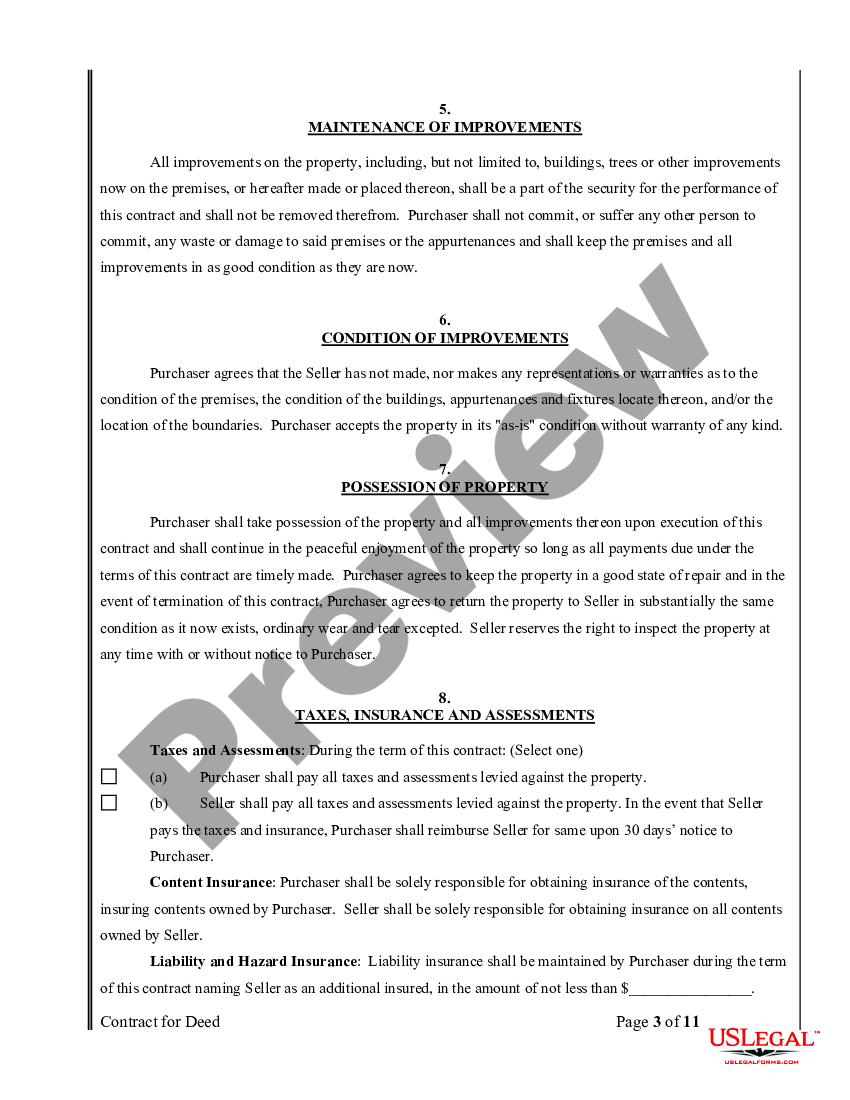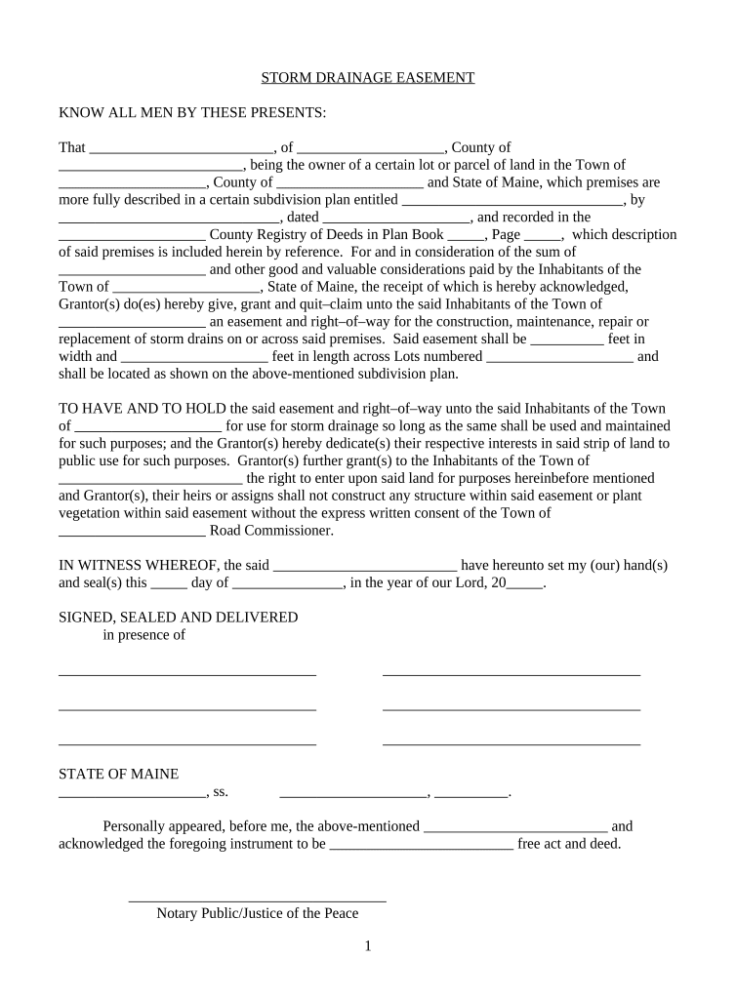Maine Deeded Right of Way Laws
The phrase “deeded right of way” may come across as formal but it holds significance in the usage and sharing of land. In Maine this concept is especially relevant given the states rural landscape and diverse property arrangements. It pertains to a right bestowed upon an individual to traverse or utilize someone elses land. This entitlement is typically based on convenience, necessity or past usage and grasping its nuances can facilitate the resolution of property matters.
What is a Deeded Right of Way?

A right of way granted through a deed is a contract that permits one landowner to traverse or utilize another persons property for a designated purpose. This could involve gaining entry to a road, accessing utility lines or simply enjoying a picturesque view. The term deeded refers to its formal documentation in the property deed, establishing it as an enduring arrangement unless modified or ended through legal means.
Here are some key aspects:
- Written Agreement: It’s a formal agreement documented in the property deed.
- Specific Purpose: The right of way is usually for a specific reason, such as access or utility.
- Permanent Right: It remains in effect as long as the deed is in place, unless legally changed.
How Deeded Rights of Way Are Established
Setting up a right of way in Maine usually requires a few important steps. While the process may differ based on the details of the land and the terms agreed upon by the parties involved here is a basic overview.
- Negotiation: The parties involved discuss and agree on the need and terms of the right of way. This is often where personal anecdotes come into play. I recall a neighbor of mine who needed access to their property through a nearby field. After some friendly negotiation, they came to a mutual agreement that was formalized in writing.
- Drafting the Deed: A legal document is drafted to outline the terms of the right of way. This includes the specific location, purpose, and any restrictions.
- Recording: The deed is recorded in the county registry, making it an official part of the property’s legal records.
- Ongoing Maintenance: Both parties may need to manage and maintain the right of way, ensuring it remains clear and functional as agreed.
Grasping these steps can assist you in handling property rights more efficiently. Its usually the nuances in these contracts that can make a significant impact on how smoothly everything operates.
Legal Implications of Deeded Rights of Way
Deeded rights of way involve more than simply passing through property; they carry legal considerations that affect both landowners and users. In Maine being aware of these implications can help avoid misunderstandings and conflicts. For example I recall a situation where a friends family had a deeded right of way across a neighbors land. What appeared to be a simple arrangement resulted in confusion regarding maintenance duties. This incident underscored the significance, of fully understanding the legal aspects of such agreements.
Here are some key legal implications:
- Legal Enforcement: Once a right of way is deeded, it’s legally enforceable. This means that if someone tries to block access, the holder of the right can seek legal remedy.
- Property Value Impact: Deeded rights of way can affect property values. For example, a property with a right of way might be less valuable if the access is problematic or if it intrudes on the owner’s privacy.
- Maintenance Obligations: Depending on the agreement, maintenance responsibilities can fall on either the landowner or the right-of-way holder. This needs to be clearly defined to avoid disputes.
- Restrictions and Limitations: The deed will often specify any restrictions on the use of the right of way. These need to be followed strictly to avoid legal issues.
Grasping these consequences aids in avoiding disputes and ensures that both sides uphold their responsibilities fostering a friendly rapport and a harmonious utilization of assets.
Property Owner Responsibilities
Having property brings along a set of duties, particularly when it comes to a deeded right of way. These duties are in place to ensure that the right of way is utilized and well kept. I encountered a scenario where a neighbor had a right of way passing through our land. Keeping the route unobstructed and well maintained was essential for fostering good relations and meeting our legal responsibilities.
Here’s a summary of key points for property owners to consider:
- Maintaining the Path: The property owner may need to maintain the right of way area, ensuring it’s free from obstructions and in good condition.
- Allowing Access: It’s important to respect the access rights granted. Blocking or impeding the path can lead to legal disputes.
- Communication: Keeping open lines of communication with the right-of-way holder can help address any issues quickly and amicably.
- Respecting Boundaries: Ensuring that the use of the right of way does not extend beyond its intended purpose or impact other parts of the property.
Staying on top of these duties plays a role in keeping relationships smooth and making sure the right of way is used as intended without any hitches.
Dispute Resolution for Deeded Right of Way Issues
Conflicts regarding established rights of way can be quite complex usually arising from misinterpretations or differing opinions on how to use and maintain them. I have witnessed disagreements between neighbors over matters, as minor as the clearing of a pathway. To settle these disputes peacefully it is essential to grasp the legal aspects involved and at times consider mediation.
Here are some tips on how to manage conflicts in a way.
- Open Communication: Start by discussing the issue with the other party. Many disputes can be resolved through simple, honest conversations.
- Review the Deed: Check the deed to understand the terms and limitations. This can clarify rights and responsibilities and form a basis for resolving the issue.
- Mediation: If direct communication doesn’t work, consider mediation. A neutral third party can help facilitate a solution that works for both sides.
- Legal Action: As a last resort, legal action might be necessary. This involves taking the matter to court where a judge can make a binding decision based on the deed and applicable laws.
When it comes to resolving conflicts prioritizing finding a solution over engaging in a confrontation can be a time saver, stress reliever and relationship preservative. The key to achieving outcomes often lies in negotiating and being open to seeing things from each others viewpoints.
How to Amend or Terminate a Deeded Right of Way
Changing or ending a right of way isn’t just a matter of flipping a switch; it requires careful consideration and sometimes a bit of back and forth. I had a client who needed to adjust the terms of their right of way because the original route was blocked by new construction. Navigating the legal procedures was essential and grasping the steps involved made a significant impact.
Here’s a helpful resource on how to modify or end a granted right of way.
- Review the Existing Deed: Start by thoroughly reviewing the current deed. This document outlines the terms and conditions, and understanding it is key to making any changes.
- Agreement Between Parties: Both parties— the landowner and the right-of-way holder— need to agree on the amendments or termination. Clear communication and mutual consent are essential.
- Draft a New Agreement: If amending, draft a new agreement that specifies the changes. This document should be precise and reflect the updated terms clearly.
- Legal Documentation: Have the new agreement drafted or reviewed by a legal professional to ensure it meets all legal requirements.
- Recording the Change: File the amended deed or termination documents with the county registry where the original deed was recorded. This makes the changes official and legally binding.
By following these procedures we can make sure that any alterations to the right of way are carried out in a way that is lawful and seamless. This helps prevent any disagreements down the road and ensures that the needs of all parties involved are taken care of.
Important Case Law and Precedents
Gaining insight into the application of law in previous cases can shed light on the management of deeded right of ways. Legal precedents serve as a guide for resolving conflicts and defining terms. I remember examining different cases to assist a friend in grasping how the judiciary might perceive their circumstances. This retrospective outlook proves to be immensely beneficial.
Here are some notable legal cases and precedents concerning granted rights of way.
| Case | Issue | Outcome |
|---|---|---|
| Smith v. Johnson | Dispute over right of way access | The court upheld the right of way, emphasizing the importance of maintaining access as per the original agreement. |
| Jones v. Brown | Termination of right of way | The termination was granted due to significant changes in land use that rendered the original path obsolete. |
| Williams v. Davis | Modification of right of way terms | The court allowed modifications, provided they were mutually agreed upon and did not infringe on the original purpose. |
These instances showcase the way in which judicial systems have understood and upheld granted pathways. They serve as a source of insight and may assist in forecasting the resolution of comparable matters down the line.
Frequently Asked Questions
Exploring the realm of deeded rights of way can bring up a lot of queries. Whether it’s about understanding concepts or delving into intricate legal situations this is a subject that often needs some unraveling. In my experience tackling these commonly asked questions sheds light on the topic and offers valuable perspectives for individuals navigating these matters.
Here are a few frequently asked questions along with their responses.
- What is the difference between a deeded right of way and an easement? A deeded right of way is a specific type of easement that grants access through a property, while an easement can cover a broader range of uses.
- Can a deeded right of way be sold or transferred? Yes, a deeded right of way can be transferred if the deed allows for it. It’s important to document this transfer legally to ensure it is enforceable.
- What happens if the right of way is blocked? If access is blocked, the right-of-way holder can seek legal action to enforce their access rights, based on the terms specified in the deed.
- Can the terms of a deeded right of way be changed? Yes, but changes must be mutually agreed upon by both parties and formally documented to be legally binding.
By tackling these inquiries we can shed light on common doubts and offer a better insight into the management and safeguarding of deeded rights of way.
Conclusion
Deeded rights of way go beyond being contracts; they play a role in managing properties and maintaining good relationships with neighbors. Being aware of their significance dealing with changes and resolving conflicts can help you avoid issues down the line and promote interactions, with those living nearby. I’ve witnessed how well defined agreements and open discussions can turn potential disputes into mutually beneficial outcomes. Whether you’re addressing an existing right of way or contemplating modifications taking an approach ensures that everyones interests are honored and property usage stays in harmony. By staying knowledgeable and taking steps you can navigate these legal matters confidently and transparently.


